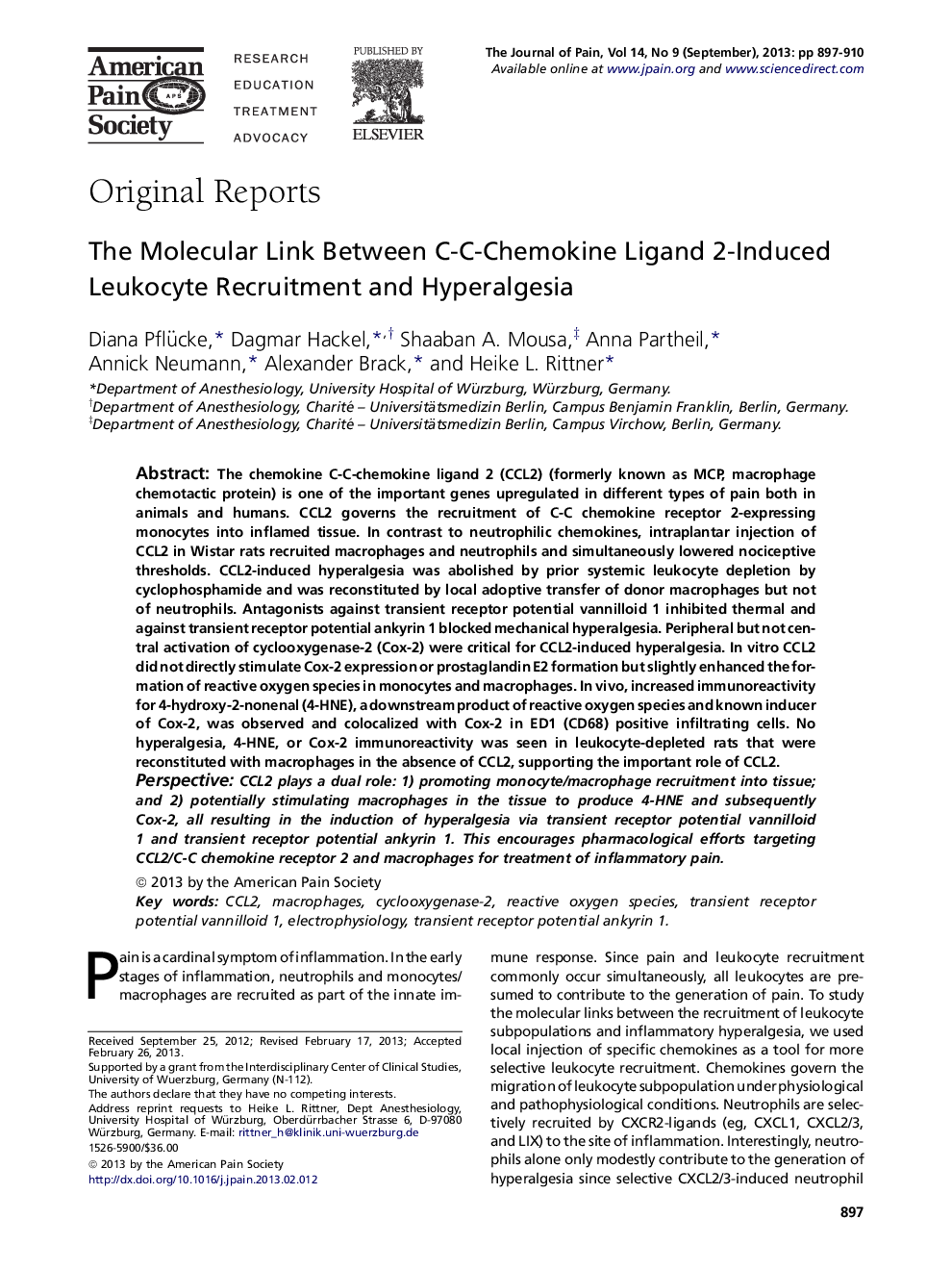| کد مقاله | کد نشریه | سال انتشار | مقاله انگلیسی | نسخه تمام متن |
|---|---|---|---|---|
| 2728982 | 1566756 | 2013 | 14 صفحه PDF | دانلود رایگان |

The chemokine C-C-chemokine ligand 2 (CCL2) (formerly known as MCP, macrophage chemotactic protein) is one of the important genes upregulated in different types of pain both in animals and humans. CCL2 governs the recruitment of C-C chemokine receptor 2-expressing monocytes into inflamed tissue. In contrast to neutrophilic chemokines, intraplantar injection of CCL2 in Wistar rats recruited macrophages and neutrophils and simultaneously lowered nociceptive thresholds. CCL2-induced hyperalgesia was abolished by prior systemic leukocyte depletion by cyclophosphamide and was reconstituted by local adoptive transfer of donor macrophages but not of neutrophils. Antagonists against transient receptor potential vannilloid 1 inhibited thermal and against transient receptor potential ankyrin 1 blocked mechanical hyperalgesia. Peripheral but not central activation of cyclooxygenase-2 (Cox-2) were critical for CCL2-induced hyperalgesia. In vitro CCL2 did not directly stimulate Cox-2 expression or prostaglandin E2 formation but slightly enhanced the formation of reactive oxygen species in monocytes and macrophages. In vivo, increased immunoreactivity for 4-hydroxy-2-nonenal (4-HNE), a downstream product of reactive oxygen species and known inducer of Cox-2, was observed and colocalized with Cox-2 in ED1 (CD68) positive infiltrating cells. No hyperalgesia, 4-HNE, or Cox-2 immunoreactivity was seen in leukocyte-depleted rats that were reconstituted with macrophages in the absence of CCL2, supporting the important role of CCL2.PerspectiveCCL2 plays a dual role: 1) promoting monocyte/macrophage recruitment into tissue; and 2) potentially stimulating macrophages in the tissue to produce 4-HNE and subsequently Cox-2, all resulting in the induction of hyperalgesia via transient receptor potential vannilloid 1 and transient receptor potential ankyrin 1. This encourages pharmacological efforts targeting CCL2/C-C chemokine receptor 2 and macrophages for treatment of inflammatory pain.
Journal: The Journal of Pain - Volume 14, Issue 9, September 2013, Pages 897–910